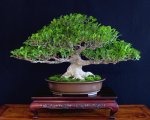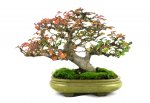Vance Wood
Lord Mugo
Thank You, I just started doing what I liked to do and over the years my likes have not changed. Of course the observation of sticks in pots is quite accurate. Almost everyone I knew at the time belonged to the SIP (sticks in pots) club. Most of us didn't have a clue how to develop a piece of raw material into a bonsai. Most of us didn't have the resourses to get the kind of training some today have been blessed to acquire thus eliminating at least a decade in the learning curve. I am not bemoaning my history; it is what it is, I am just happy that no matter how long I do this thing called bonsai there is always something new to learn. Remember before you rule out some individual because you think you know more than he/she, a stopped clock is right at least twice a day.



























